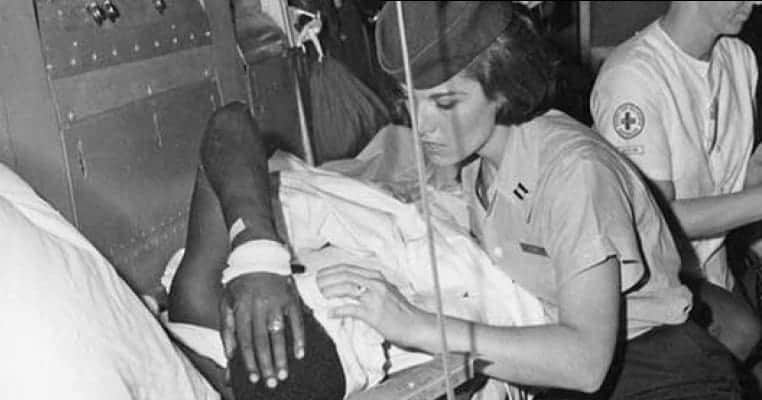While the iconic images of US soldiers in the Vietnam War all evoke young men posing in alien-looking jungles or with Huey helicopters, the reality is that many women were involved in the conflict as well. Little official data exists to confirm the number of women who served or volunteered, but estimates put it around 11,000. The vast majority were volunteers, not service members, serving in nursing roles with various branches of the US Armed Forces. However, there were also enlisted service members in all branches and at various levels including physicians, air traffic controllers, intelligence officers, and other service positions.
American women also served in Vietnam through charitable organizations like the United Service Organization (USO), famous for its entertainment programs, the Red Cross, the Catholic Relief Services, and other humanitarian organizations. Female journalists and foreign correspondents were also present and even suffered casualties. South Vietnamese women joined the war effort through a Women’s Corps that focused on supporting military families through medical care and child care. The North Vietnamese paid less heed to gender norms and had women present at many levels throughout their war effort including serving in combat and sabotage units alongside men.

The US Army
The vast majority of women who serviced in the US Armed Forces during the Vietnam conflict were nurses. All of the nurses who served did so as volunteers, dispatching with the Army Nurse Corps. Their ranks ranged from recent college graduates to career service members in their 40s. The first Army Nurse Corps members arrived in Vietnam in 1956, with a mission of teaching the South Vietnamese nursing skills. More traveled to Vietnam as the conflict increased, with over 5,000 eventually serving between 1962 and 1973. The last Army Nurse Corps member left Vietnam in March 1973, just two years before the fall of Saigon.

Elizabeth Allen, a psychiatric nurse in Vietnam. History.com
The army nurses did suffer casualties throughout the duration of their volunteer service. Five female army nurses are documented as casualties, with the first being Lieutenant Colonel Annie Ruth Graham, who died of a stroke in 1968 at the age of 52. Prior to her service in Vietnam, she had served as an army nurse in both World War II and the Korean conflict. A combat death occurred in 1969 when First Lieutenant Sharon Anne Lane died of shrapnel wounds sustained during a bomb attack on the hospital where she served. She was posthumously awarded a Vietnamese Gallantry Cross with Palm and a US Bronze Star for Heroism.
The US Army resisted the idea of sending women, other than nurses, to the Vietnam conflict. It wasn’t until 1964, when General William Westmoreland requested the presence of a Women’s Army Corps (WAC) officer, that non-nurse service members had a presence in Vietnam. The WAC, which was founded during World War II, had 20 officers and 130 enlisted women in Vietnam at its peak in 1970. Their mission was to train South Vietnamese women to create their own women’s army division. No WAC members were killed in the conflict.

